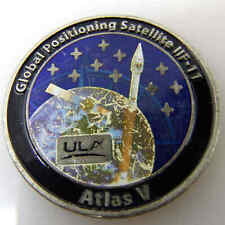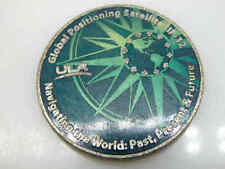\"Global Positioning System\" Ivan A. Getting Signed 5.5X3 Card For Sale

When you click on links to various merchants on this site and make a purchase, this can result in this site earning a commission. Affiliate programs and affiliations include, but are not limited to, the eBay Partner Network.
\"Global Positioning System\" Ivan A. Getting Signed 5.5X3 Card:
$69.99
Up for sale "Global Positioning System" Ivan A. Getting Hand Signed 5.5X3 Card.
18, 1912 – October 11, 2003) was engineer,
credited (along with Roger with the development of the Global Positioning System (GPS).
He was the co-leader (the other being Louis
Ridenour) of the research group which developed the SCR-584, an automatic microwave tracking fire-control system,
which enabled anti-aircraft guns to
destroy a significant percentage of the German V-1 flying bombs launched against London late in the Second World War. Ivan A. Getting was born on 18 January 1912
in New York City to a
family of Slovak immigrants from Bytča, Slovakia and grew up in Pittsburgh, Pennsylvania.
He attended the Massachusetts
Institute of Technology (MIT) as an Edison Scholar (S.B. Physics, 1933);
and Merton College, Oxford as
a Graduate Rhodes Scholar (D.Phil.,
1935) in astrophysics. He then
worked at Harvard University on
nuclear instrumentation and cosmic rays (Junior Fellow, 1935-1940) and
the MIT Radiation Laboratory (1940-1950;
Director of the Division on Fire Control and Army Radar, Associate Professor
1945; Professor 1946). During the Second World War he was a special consultant
to Secretary of War Henry L. Stimson on the Army's use of radar.
He also served as head of the Naval Fire Control Section of the Office of
Scientific Research and Development, member of the Combined Chiefs of Staff
Committee on Searchlight and Fire Control, and head of the Radar Panel of the
Research and Development Board of the Department of Defense. In 1950, during
the Korean War, Getting became Assistant for Development Planning,
Deputy Chief of Staff, United States Air Force; and in 1951, Vice President for
Engineering and Research at the Raytheon Corporation (1951-1960). While at Raytheon, Getting also served on the
Undersea Warfare Committee of the National
Research Council. In 1960 Getting became the founding President of
The Aerospace Corporation (1960-1977). The Corporation was established at the request
of the Secretary of the Air Force as a non-profit organization to apply
"the full resources of modern science and technology to the problem of
achieving those continued advances in ballistic missiles and space systems,
which are basic to national security." Getting was also a founding member
of the Air Force Scientific Advisory Group (later renamed the Scientific
Advisory Board) and chair of its Electronics Panel. Getting retired from The
Aerospace Corporation in 1977. In 1978 he served as President of the Institute of Electrical and Electronics Engineers. He also
served on the Board of Directors of the Northrop Corporation and
the Board of Trustees of the Environmental
Research Institute of Michigan. Getting died on October 11, 2003, in
Coronado, California. While at MIT Radiation Laboratory, Getting's group
developed the first automatic microwave tracking fire control radar, the SCR
584. This system, along with the proximity fuze, significantly reduced damage to London by
the V-1 flying bombs (also
known as "doodlebugs" or "buzz bombs") launched by Germany
from June 1944 of the Second World War, by enabling accurate anti-aircraft fire
to destroy the missiles. On 28 August 1944, the last day on which significant
numbers of V-1s were launched against London, of 104 fired, 68 were destroyed
by artillery, 16 by other means, and 16 crashed. Getting was an early designer and
proponent of satellite-based navigation systems which led to the development
and deployment of the Global Positioning System (GPS). While in Raytheon he
oversaw the development of the first position-finding system – developed in response to
an Air Force requirement for a guidance system to be used with a proposed Intercontinental Ballistic
Missile (ICBM) that would achieve mobility by traveling on a
railroad system. While at The Aerospace Corporation he oversaw studies on the
use of satellites as the basis for a navigation system for vehicles moving
rapidly in three dimensions. In addition to his technical contributions to GPS,
Getting was a tireless advocate of the project in the face of early resistance
from the Pentagon. He was also
involved in the development of the first He also was involved in the development of the
Navy GFCS MK-56 anti-aircraft
fire control system; as well as in the development and building of a 350 MeV synchrotron at MIT Radiation Laboratory.
He also was involved in the development of the Sparrow III and Hawk missile systems;
as well as commercial production of transistors at Raytheon. As a consultant to the US government: implementation
of the Quick Reaction Capability for Electronic Counter-Measures; establishment
of the SHAPE Supreme
Headquarters Allied Powers Europe Laboratory at the Hague;
deployment of U.S. air defense capability called the Semi-Automatic Ground
Environment (SAGE) radar system; direction of studies on MX missile basing and
long-range combat aircraft; technical analysis and design of a long-range
supersonic bomber capable of reaching the former Soviet Union and returning
without refueling (Getting's work is credited in the reinstatement of the B-1 bomber funding by the U.S. Congress). As member of
the Undersea Warfare Committee of the National Research Council: Associate
Director of Project Nobska sponsored by the U.S. Navy and concerning submarine
warfare weapons; recommended a submarine-based, ballistic missile that formed the basis for the Polaris missile. At The Aerospace Corporation: planning
for new ballistic missile systems; oversight of space launch systems;
development of high-powered chemical lasers; contributions to the Mercury and Gemini space launch systems.

Related Items:
GLOBAL POSITIONING SATELLITE IIF-11 ATLAS V ATLAS CHALLENGE COIN
$48.00
"Global Positioning System" Ivan A. Getting Signed 5.5X3 Card
$69.99
ATLAS GLOBAL POSITIONING SATELLITE IIF 12 CHALLENGE COIN
$48.00



